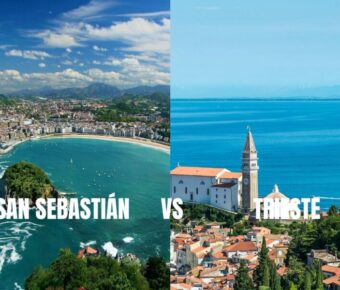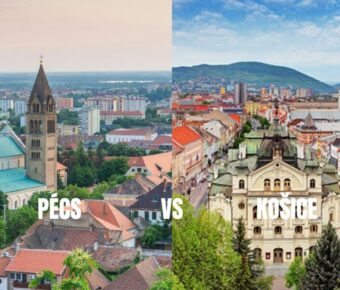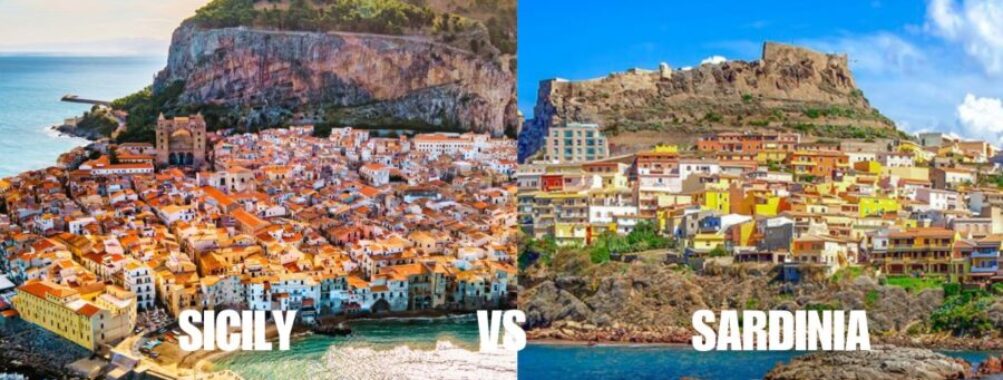
Sicily vs Sardinia Travel: 7 Must-Know Differences Before You Go
Picking between Sicily and Sardinia? It’s honestly a tough call. Both are gorgeous, but the experiences couldn’t be more different.
If you want ancient ruins, lively cities, and a wild mix of cultures, Sicily’s got your name on it. But if you’re after wild landscapes, secret coves, and a slower, almost timeless pace, Sardinia might just steal your heart.
You can spend a morning haggling in a Sicilian market, then wander through Greek temples by sunset. Or, in Sardinia, hike rugged cliffs and swim in turquoise bays you can only reach by boat.
I’ve tried both, and honestly, the vibe couldn’t be more different. Sicily feels layered, intense, a little chaotic—in a good way. Sardinia? It’s untamed, quietly stunning, and way more laid-back.
The real trick? Figuring out which one fits your travel style before you hit “book.”
Table of Contents
- Key Takeaways
- Sicily vs Sardinia: Which Island Fits Your Travel Style?
- Who Should Choose Sicily?
- Who Should Choose Sardinia?
- Key Differences at a Glance
- Getting There and Getting Around
- Access and Transportation Options
- Best Ways to Explore Each Island
- Beaches and Natural Wonders
- Sardinia’s Best Beaches and Coastal Gems
- Sicily’s Unique Shores and Landscapes
- Top Nature Reserves and Parks
- History and Cultural Heritage
- Sicily’s Ancient Ruins and UNESCO Sites
- Sardinia’s Nuragic Civilization and Traditions
- Influences from Greeks, Romans, and Spanish
- Local Cuisine and Food Experiences
- Sicilian Dishes and Must-Try Specialties
- Sardinian Flavors and Traditional Foods
- Wine and Regional Delicacies
- Top Cities, Towns, and Unique Destinations
- Iconic Sicilian Cities and Villages
- Must-See Sardinian Towns
- Hidden Gems and Off-the-Beaten-Path Spots
- Best Times to Visit and Safety Tips
- Seasonal Highlights and Weather
- Safety Considerations for Travelers
- Frequently Asked Questions
- What are the top attractions for first-time visitors in both Sicily and Sardinia?
- How do the culinary experiences differ between Sicily and Sardinia?
- Can you compare the beach landscapes of Sicily and Sardinia?
- What unique cultural experiences can travelers expect in Sicily versus Sardinia?
- How does the cost of travel compare between Sicily and Sardinia?
- What are the best times of year to visit Sicily and Sardinia for optimal weather?
- Book Your Dream Experience
- More Travel Guides
Key Takeaways
- Sicily: rich history, buzzing cities, deep cultural mashups
- Sardinia: remote beaches, wild nature, adventure playground
- Your pick depends on whether you’re craving cultural depth or a proper natural escape
Sicily vs Sardinia: Which Island Fits Your Travel Style?
They both float in the same sea, but wow, do they offer different trips. One’s all about ancient layers and city energy. The other? Wild coastlines and a pace that feels almost off-grid.
Who Should Choose Sicily?

If you’re after history at every corner, Sicily is where you want to be. You can stroll from a buzzing Palermo market straight to an Arab-Norman cathedral, then wander among Greek ruins by sunset.
Food’s a big deal here. You’ll spot arancini and panelle on every corner, but you can also sit down to refined plates in Baroque towns. The seafood’s top-notch, and desserts like cannoli and granita? Don’t get me started.
Sicily’s perfect if you want to mix city culture and nature. Hike Mount Etna in the morning, then dive into the sea off Cefalù in the afternoon.
The Aeolian Islands are close enough for a day trip, and Stromboli’s volcano sometimes puts on a show at night.
If you like urban energy, Sicily’s for you. Catania and Syracuse buzz with nightlife, festivals, and open-air theaters that run late.
Who Should Choose Sardinia?

Sardinia’s your spot if beaches are the main event. Some of the best—like Cala Luna or Spiaggia del Principe—take a hike or boat ride to reach, so they stay quieter even when it’s busy.
The sand ranges from powdery white to quartz pebbles, and the water’s so clear it almost doesn’t look real.
It feels wilder and more remote than Sicily. Inland, you’ll find rugged mountains, deep gorges (like Gola Su Gorropu), and mysterious nuraghe towers scattered across fields.
Hiking, climbing, water sports—they’re all big here.
If you want slower-paced towns and fewer crowds, Sardinia’s got you. Alghero and Bosa have historic charm without the rush.
As for food? Fregola pasta, roasted suckling pig, and seadas with honey. Add a glass of Cannonau wine and you’ll start to see why people here live so long.
Key Differences at a Glance
| Feature | Sicily | Sardinia |
|---|---|---|
| Best for | History, culture, city life | Beaches, nature, outdoor activities |
| Crowds | Busier in peak season | Generally quieter |
| Landscape | Volcanic, varied | Rugged, wild |
| Food focus | Street food, seafood, sweets | Rustic dishes, pork, pasta |
| Top activities | Ancient sites, island hopping, markets | Hiking, water sports, secluded beaches |
Getting There and Getting Around

Getting to either island isn’t hard, but your choices will shape your trip. Once you land or dock, how you get around depends on whether you’re after speed, saving cash, or just want to wander off the usual path.
Access and Transportation Options
You can fly straight into the main airports. Sardinia’s got Cagliari, Olbia, and Alghero, while Sicily’s main gateways are Palermo and Catania.
Budget airlines run seasonal routes from all over Europe, so poke around on Skyscanner and see what pops up before you commit.
Ferries are another way in, especially if you’re coming from mainland Italy or nearby islands. Overnight routes from Rome, Naples, or Genoa head to Sardinia; Sicily links to Naples and Reggio Calabria.
The crossing can be long, but you can bring your own car, which is kind of a game-changer.
For smaller spots like the Aeolian Islands, you’ll need a hydrofoil or ferry from Sicily’s north coast. In summer, these sell out fast, so book ahead if you can.
Best Ways to Explore Each Island
Public transport’s better in Sicily than Sardinia, but it’s not perfect. Sicily’s got a wider rail network connecting Palermo, Catania, and Messina, plus intercity buses that reach smaller towns.
Sardinia’s trains are slower and don’t go everywhere, so buses fill in the gaps.
Honestly, renting a car gives you the most freedom on both islands. You can chase down remote beaches, mountain villages, and rural wineries—no timetables to worry about.
Book early on Booking.com to snag the best deals on rentals.
If you’re stopping in cities for a day or two, stash your bags at a luggage storage spot. I’ve done this in Palermo before a late train—made the day way easier.
Beaches and Natural Wonders
The personalities of these islands really show on their coastlines and wild spaces. One’s got endless stretches of pale sand and secret coves you can only reach by boat or on foot. The other throws in volcanic drama, golden beaches, and ancient landscapes shaped by centuries.
Sardinia’s Best Beaches and Coastal Gems
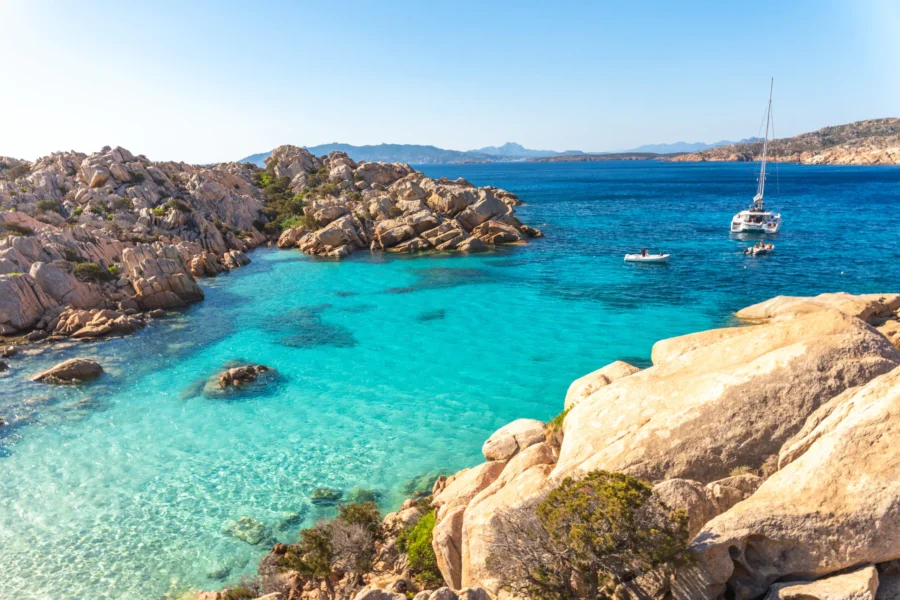
If you’re after that “wait, this is Europe?” feeling, Sardinia’s coastline won’t disappoint. The Costa Smeralda is famous—emerald water, glossy resorts like Porto Cervo—but honestly, the magic often hides away from the crowds.
Head down the Gulf of Orosei and check out Cala Goloritzé. It’s a tiny cove with white pebbles and turquoise water, framed by limestone cliffs. No driving in—you either hike or come by boat, which keeps it peaceful.
On the northwest tip, Stintino’s La Pelosa Beach almost looks fake, with its shallow, glass-clear water. If you want something wilder, the west coast’s Costa Verde has huge dunes and rougher seas.
Tip: Sardinia’s beaches don’t always have facilities, so bring water, snacks, and some shade if you’re planning a long day.
Sicily’s Unique Shores and Landscapes
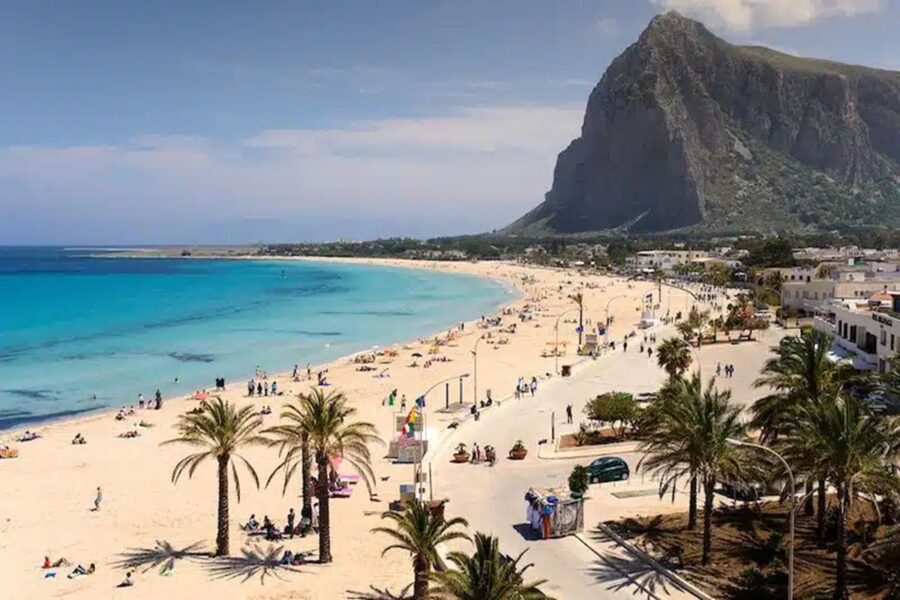
Sicily’s coastline is all about variety, not perfection. One day you’re swimming off soft sand in San Vito Lo Capo; the next, you might be scrambling over black lava rock near Mount Etna.
Close to Palermo, Mondello Beach is a local favorite—packed in summer, but with calm, shallow water. For something quieter, the Riserva Naturale dello Zingaro has little pebble coves with green-blue water and hiking trails linking them.
The volcanic islands—Stromboli, Vulcano—offer black-sand beaches and steaming fumaroles. Sicily’s beauty is tied to its geology. Sometimes you’ll see beaches with Etna’s snowy peak in the background.
If snorkeling’s your thing, the Aeolian Islands are worth the ferry. Underwater visibility is excellent, and you might even spot volcanic rock formations down below.
Top Nature Reserves and Parks
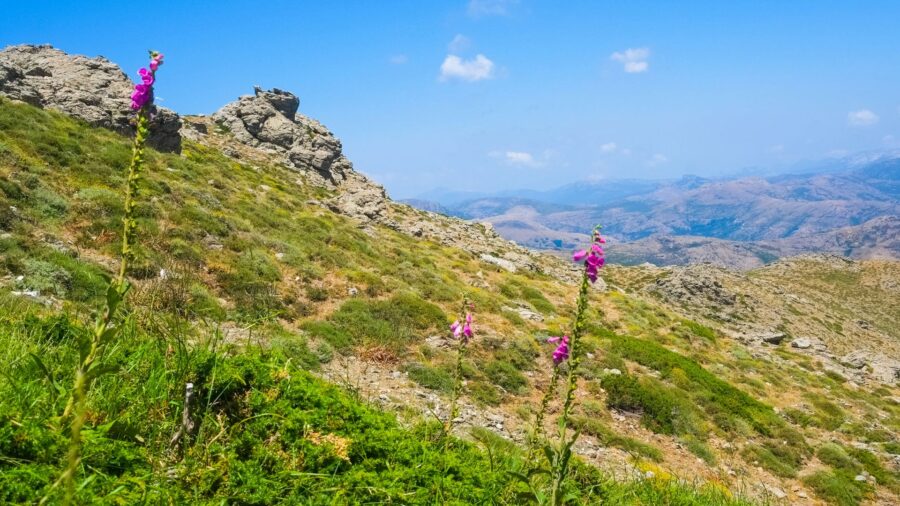
Both islands have wild spaces that are just as rewarding as their beaches. In Sardinia, Gennargentu National Park covers rugged mountains, deep gorges, and rare wildlife. Spring’s especially pretty, with wildflowers everywhere.
Sicily’s Etna Park is its own world—hiking trails wind through old lava fields, pine forests, and alpine meadows. If you’re not up for a full climb, you can take a cable car partway.
Other standouts? Sardinia’s Asinara National Park, once a prison island, now a sanctuary for albino donkeys. Sicily’s Vendicari Nature Reserve draws migrating flamingos to its salt pans.
If you time it right, you can hike in the hills in the morning and cool off in the sea by afternoon. Not a bad way to spend a day, honestly.
History and Cultural Heritage
If you love walking through places where you can feel the centuries under your feet, both Sicily and Sardinia will keep you busy. From massive temple complexes to mysterious prehistoric towers, each island tells a totally different story—and you can still wander right through it.
Sicily’s Ancient Ruins and UNESCO Sites

Sicily’s packed with UNESCO World Heritage sites. You’ll find some of the best-preserved Greek temples outside Greece, especially in Agrigento’s Valley of the Temples.
Standing there at sunset, with the columns glowing gold, is pretty unforgettable.
Syracuse is another highlight, especially the historic Ortigia Island, where Greek ruins sit right next to Baroque palaces. The ancient theater still hosts performances—watching a play where people did 2,000 years ago is wild.
In Palermo, the Arab-Norman architecture tells the story of all the cultures that ruled here. The Monreale Cathedral is a must for its intricate mosaics.
If you’re into Roman history, the Villa Romana del Casale has floor mosaics so detailed you almost feel like you’ve stepped into the scenes.
Sardinia’s Nuragic Civilization and Traditions
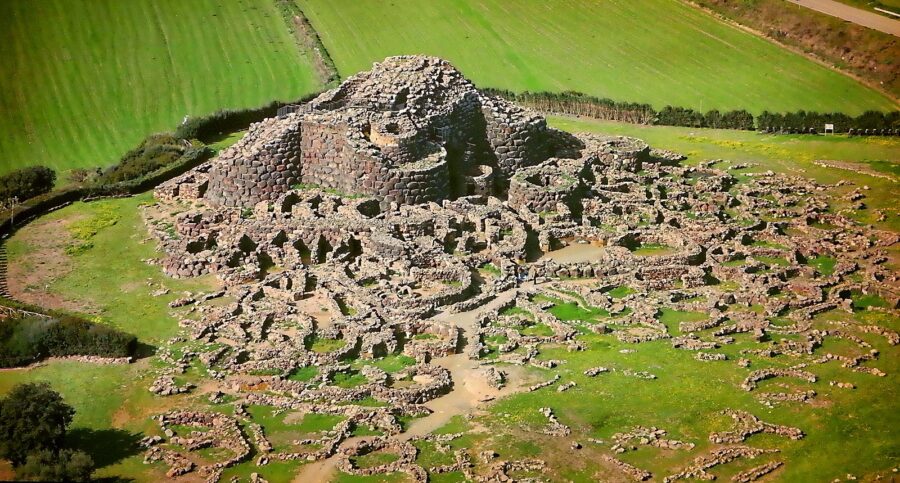
Sardinia’s ancient history? It feels more mysterious. The Nuragic civilization left behind thousands of nuraghi (stone towers) scattered across the countryside. Sometimes you’ll spot one just sitting in a field, no ticket booth, no crowds.
The Nuraghe Su Nuraxi is the most famous and a UNESCO site, but honestly, I’ve stumbled across smaller towers that feel even more atmospheric. You can climb inside some and imagine what life was like here 3,000 years ago.
You’ll also see tombe dei giganti (“giants’ graves”) and pozzi sacri (sacred wells). Local traditions run deep—village festivals, weaving, knife-making—so you’re not just looking at history, you’re seeing it lived.
Influences from Greeks, Romans, and Spanish
Both islands show traces of Greeks and Romans, but in their own ways. Sicily’s Greek temples and theaters are obvious. Roman villas and old roads still crisscross the island.
Sardinia’s Roman ruins are smaller, but no less fascinating. The ancient city of Nora has mosaics, baths, and sea views that make you wonder why anyone ever left.
Spanish influence? You’ll see it in Sardinia’s Alghero, where Catalan Gothic architecture and street signs in Catalan reflect centuries of rule. In Sicily, Spanish rule left its mark in Baroque towns and layered cuisine. Sometimes you taste it as much as you see it.
Local Cuisine and Food Experiences
Food on both islands tells a story—history, geography, and all the quirks in between. Dishes here reflect centuries of trade, conquest, and the stubbornness of local farmers who stick to what works.
The flavors? Bold, but nothing showy. Recipes rarely change, and honestly, I wouldn’t want them to.
Sicilian Dishes and Must-Try Specialties

Sicily’s food is a wild mix of Mediterranean sunshine, volcanic grit, and a parade of invaders who left their mark. You’ll get Arab spices, Greek herbs, and a little Spanish sweetness—sometimes all in one bite.
Start with arancini. They’re deep-fried rice balls, usually stuffed with ragù, mozzarella, or, if you’re lucky, pistachio cream. Street vendors hand them over hot and wrapped in paper—perfect for wandering Palermo’s chaos.
Pasta alla Norma is a classic that sneaks up on you. It’s just pasta with fried eggplant, tomato sauce, ricotta salata, and basil, but man, it sticks in your memory.
Craving veggies? Grab some caponata. It’s a sweet-and-sour eggplant stew with celery, capers, and vinegar. Locals eat it cold, which makes sense once you’ve sweated through a Sicilian summer.
Dessert? Cannoli is the obvious answer, but don’t skip granita. Almond or lemon flavors are my top picks when the sun’s relentless.
Sardinian Flavors and Traditional Foods

Sardinia goes for rustic, slow-cooked comfort. Street food isn’t really the thing here—instead, you’ll find porceddu, a suckling pig roasted over coals until the skin snaps.
Pasta here has its own attitude. Malloreddus (Sardinian gnocchi) are small, ridged shells, usually paired with sausage and a saffron-laced tomato sauce. It’s the kind of meal you crave after a day on the trails.
If you’re near the coast, seafood is everywhere. Locals shave bottarga—cured mullet roe—over pasta or bread for a salty, briny hit. They treat it like treasure.
For dessert, try seadas. These fried pastries come stuffed with fresh cheese and a drizzle of honey. Not too sweet, so you’ll probably eat more than you planned.
Wine and Regional Delicacies

Wine isn’t just a drink here—it’s practically a food group. Sicily pours out Nero d’Avola, a bold, full-bodied red that stands up to anything rich or grilled. The crisp whites from Mount Etna’s slopes have a mineral kick that’s hard to forget.
Sardinia’s Cannonau is the local pride—a smooth, earthy red people link to the island’s reputation for long life. Vermentino is the go-to white, citrusy and fresh, made for seafood and sunsets.
Cheese? Both islands have their own. In Sicily, I always grab pecorino with black pepper. Sardinia’s pecorino sardo comes young or aged—each has its own bite.
If you’re the type who plans a trip around meals, you’ll fit right in. Just be ready to loosen your belt by the end.
Top Cities, Towns, and Unique Destinations
You’ll find everything from roaring capitals to sleepy coastal villages here. Every place pulses with its own rhythm, flavors, and views.
Some towns wow you with ancient architecture, others with beaches that feel like secrets. Sometimes, you get both.
Iconic Sicilian Cities and Villages
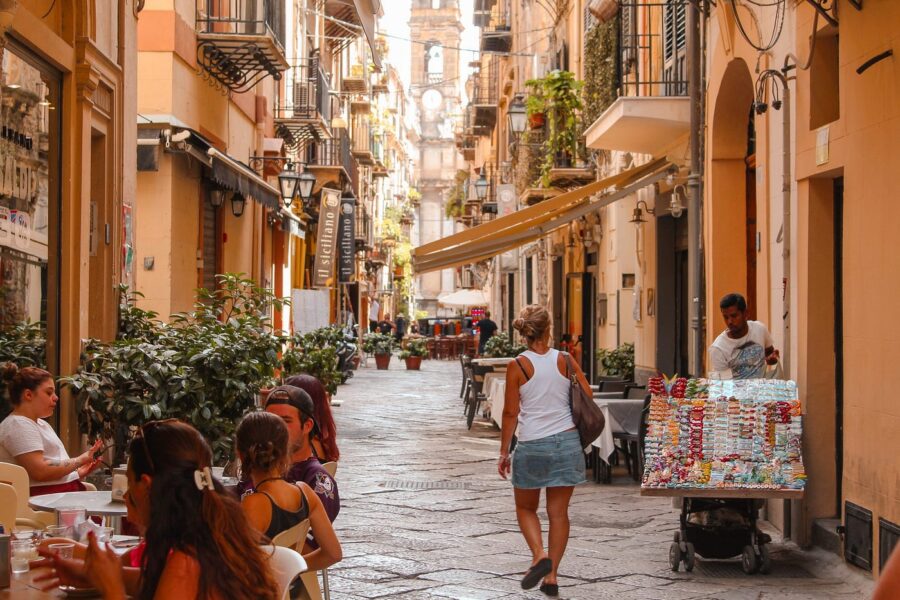
Palermo is Sicily’s wild heart. You can lose yourself in markets like Ballarò, where the air smells like grilled fish and vendors shout over each other. The Arab-Norman Cathedral and Monreale’s mosaics deserve a slow wander.
Catania sits right under Mount Etna, looking tough with its black lava stone buildings. The fish market is pure chaos—in a good way. From Catania, you can book day trips to Etna or the coast, no problem.
Taormina feels polished, almost too pretty, with its Greek Theatre perched between sea and volcano. Sure, it’s touristy, but the views and evening strolls on Corso Umberto are tough to beat. If you stay overnight, you’ll see the town’s quieter side when the crowds clear out.
Must-See Sardinian Towns
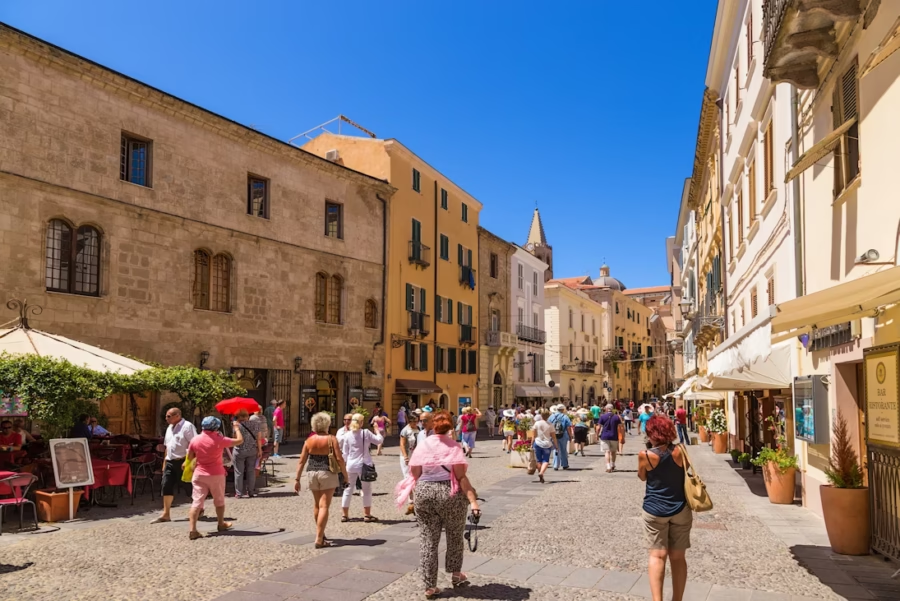
Alghero stands apart from the rest of Sardinia. You’ll notice Catalan touches everywhere—in the street signs, the food, the honey-colored old town walls. Nearby beaches like Maria Pia glow in the late afternoon.
Cagliari, built on hills tumbling into the sea, has the Il Castello district with tight lanes and Pisan towers. Sunsets here are addictive. The marina below serves up fresh seafood and a laid-back vibe.
Sassari doesn’t get many tourists, but it’s full of charm. The historic center has big piazzas and quiet churches. From here, you can head north to wild coastline or inland to villages that haven’t changed much in decades.
Hidden Gems and Off-the-Beaten-Path Spots
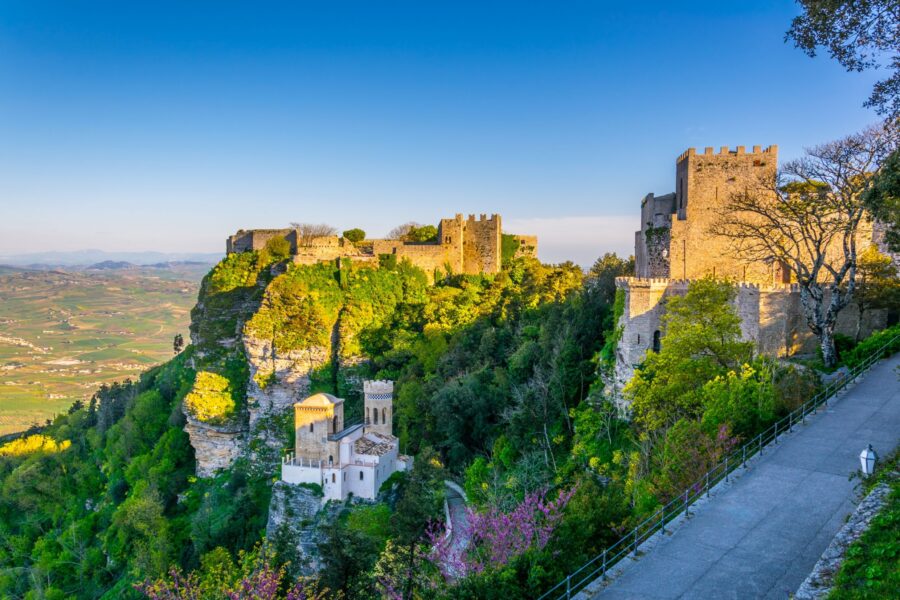
In Sicily, Erice sits on a hilltop with cobblestone streets and almond pastries that’ll ruin you for anything else. The Aeolian Islands, especially Stromboli, offer black-sand beaches and a live volcano for a little drama.
Sardinia’s Gola Su Gorropu is a limestone gorge you can hike into—bring sturdy shoes, trust me. The Bronze Age site of Su Nuraxi lets you wander ancient stone towers without elbowing through crowds.
If you’re after remote beaches, Sardinia’s Cala Goloritzé requires a hike or boat ride, while Sicily’s Torre Salsa reserve has wide, quiet sands. Either way, plan your flights so you have time to really soak it in.
Best Times to Visit and Safety Tips
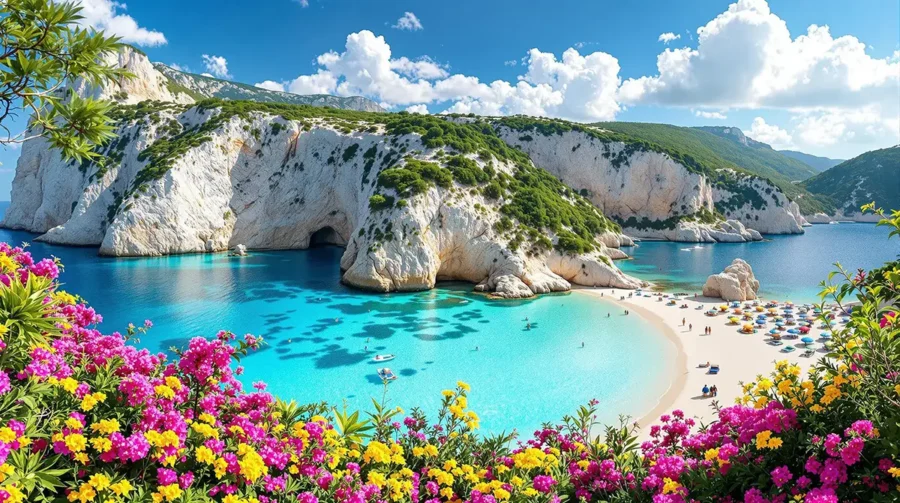
Sicily and Sardinia each have their own sweet spots for weather, crowds, and prices. Both are generally safe if you use basic precautions. Timing your trip and picking up a few local safety habits can make everything smoother.
Seasonal Highlights and Weather
For warm weather without the madness, Sardinia shines from May to June. The beaches are at their best, the sea’s just right, and you won’t get trampled by crowds. July and August crank up the heat and prices, especially on the Costa Smeralda.
Sicily’s magic happens April to June or September to October. Spring is mild—great for trekking Etna or poking around ruins. Autumn means warm water and fewer people, but summer can be brutal, especially inland.
If you’re all about the beach, both islands deliver in July and August. Just brace yourself for higher prices and busier ferries. Winter’s an option for lower costs and cool weather, but many coastal spots pretty much hibernate.
Pack light layers—evenings can surprise you with a chill. If you’re hiking or adventuring, investing in decent travel gear pays off.
Safety Considerations for Travelers
Most travelers find Sicily and Sardinia safe, with Sardinia often topping the charts for security in Italy. Petty theft happens, especially in crowded markets or transport hubs, so hang onto your stuff.
In Sicily, the main risk is pickpockets in big cities like Palermo or Catania. Don’t leave valuables in your rental car, and keep wallets in front pockets or a crossbody bag. Forget the old mafia stereotypes—tourists just don’t run into that.
Driving? Rural roads can be narrow and twisty, and locals drive with, let’s say, enthusiasm. If you rent a car, take it easy on mountain roads and watch out for scooters darting past.
Some folks buy short-term travel insurance just in case. As always, trust your gut—if a street feels deserted at night, pick a livelier way back to your hotel.
Frequently Asked Questions
Sicily and Sardinia might both be Italian islands, but they feel wildly different once you’re there. The sand, the food, the history you can actually touch—it’s the contrasts that keep things interesting.
What are the top attractions for first-time visitors in both Sicily and Sardinia?
First time in Sicily? Don’t miss the Valley of the Temples in Agrigento, Mount Etna’s slopes, and the old streets of Palermo or Catania. Even just wandering Taormina’s hillside lanes is worth it.
Sardinia’s highlights lean more toward wild nature. The Maddalena Archipelago, Golfo di Orosei’s hidden coves, and the Bronze Age nuraghi sites are all standouts. Cagliari’s old quarter is a nice surprise, especially at sunset.
How do the culinary experiences differ between Sicily and Sardinia?
Sicilian food is a melting pot—Arab, Greek, and Spanish influences are everywhere. You’ll find couscous in the west, pasta alla Norma in the east, and seafood all over. Street food is huge here: arancini, panelle, cannoli—you get the idea.
Sardinian cuisine feels more homey and rustic. Think porceddu (slow-roasted suckling pig), handmade pastas like malloreddus or culurgiones, and loads of pecorino cheese. Seafood is still great, but you’ll find more farm-to-table and hearty inland dishes than in Sicily.
Can you compare the beach landscapes of Sicily and Sardinia?
Sicily’s beaches swing from long sandy stretches like San Vito Lo Capo to rocky coves near the Zingaro Reserve. Around the Aeolian Islands, you’ll even find black volcanic sand.
Sardinia’s beaches? Whiter, finer, and the water glows turquoise to deep blue. Many of the best ones are only reachable by boat or hiking, which keeps them peaceful—at least outside the summer rush.
What unique cultural experiences can travelers expect in Sicily versus Sardinia?
In Sicily, you walk through layers—Greek temples, Roman mosaics, Norman cathedrals, Baroque towns. Festivals here mix Catholic traditions with ancient customs.
Sardinia’s culture feels fiercely local. Traditional costumes, folk music, and festivals like Sant’Efisio in Cagliari give you a look at a heritage that’s really its own thing, separate from the mainland.
How does the cost of travel compare between Sicily and Sardinia?
Sicily usually comes out cheaper, especially for food and public transit. You’ll find more budget flights and ferry options, too.
Sardinia gets expensive in summer, especially along the Costa Smeralda. Inland towns and the off-season offer better deals, so timing your trip makes a difference.
What are the best times of year to visit Sicily and Sardinia for optimal weather?
Late spring—think May through early June—and early autumn, like September and October, really hit the sweet spot on both islands. The weather feels warm but not oppressive, and you actually get some space on the beaches.
Sea temperatures stay inviting, so you can swim without that sharp inhale.
July and August? Well, brace yourself for heat and wallet-thinning prices, especially anywhere near the coast.
If hiking’s your thing, try Sardinia in April or May, or Sicily in March or April, before the sun gets too pushy.


